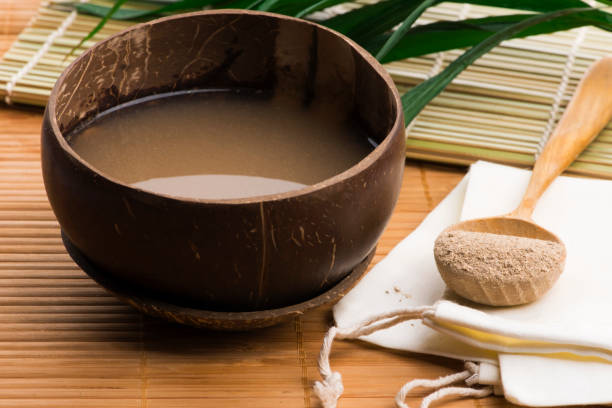Kava, scientifically known as Piper methysticum, is a plant native to the South Pacific, particularly in regions like Fiji, Vanuatu, Tonga, and Samoa. It holds deep cultural significance for many Pacific Island communities.
Kava has a rich history dating back over 3,000 years. It is believed to have originated in Vanuatu, where it was first domesticated. From there, it spread to other Pacific islands.
Cultural Significance:
- Social Bonding: Kava is considered a social lubricant. It is traditionally consumed in groups, fostering a sense of camaraderie and unity. The act of preparing and sharing kava is a symbol of hospitality and friendship.
- Spiritual and Medicinal Use: In many cultures, kava is associated with spiritual practices and used in healing ceremonies. It is believed to have calming and sedative properties, making it a natural remedy for anxiety and stress.
- Ceremonial Use: Kava plays a central role in various ceremonies and rituals across the South Pacific. It is often used in welcoming ceremonies for visitors, marriage ceremonies, and other significant communal events.
What to expect and how kava makes people feel-
Relaxation: Kava is renowned for its ability to promote a sense of relaxation. It can ease muscular tension and may lead to a calm, peaceful state of mind.
Elevated Mood: Many users report an improved mood after consuming kava. It may help alleviate symptoms of mild anxiety or low mood.
Enhanced Sociability: Kava has a reputation for enhancing sociability and promoting a sense of camaraderie. It’s often consumed in social gatherings for this reason.
Mild Numbing Sensation: Some users experience a mild numbing of the tongue and mouth, which is a characteristic sensation associated with kava consumption.
Improved Sleep: Due to its relaxing properties, kava is sometimes used to aid sleep. It may help individuals fall asleep more easily and enjoy a more restful slumber.
Clarity of Thought: While kava induces a state of relaxation, it is often described as not impairing cognitive function. Users may feel mentally clear and focused. Kava can pair great with other caffeinated beverages.
Altered Perception: In higher doses, kava may lead to a slight alteration in perception. Colors may appear more vivid, and some individuals report a subtle shift in awareness.
Muscle Relaxation: Kavalactones, the active compounds in kava, have been suggested to possess muscle relaxant properties, potentially aiding in relieving muscle tension.
Euphoria: Kava can make you feel happy and uplifted, sometimes even causing a sense of kava euphoria.
It’s important to consume kava on an empty stomach for maximum effects people. Some users report experiencing mild side effects, such as dry mouth, nausea, or drowsiness. To avoid these, it is recommended to drink plenty of water, eat something after drinking kava, and start with a low dose.
Kava is not addictive or intoxicating, and it does not impair your cognitive function or judgment. However, it is not advisable to mix kava with alcohol or other drugs, as this may increase the risk of adverse reactions.
There are different ways to prepare kava root powder, depending on your preference and convenience. Here are some of the most common methods:
- The traditional method: This method involves soaking the kava root powder in a cloth bag in warm water, and then kneading and squeezing the bag to extract the kava liquid. This method takes about 15 to 20 minutes and produces a potent and authentic kava drink.
- The blender method: This method involves blending the kava root powder with water. Add 2 tablespoons of kava powder to 1 cup of hot tap water. Blend for a couple of minutes. Then empty and strain through a cloth strainer
If you are interested in trying kava, you can find premium, high quality kava root powder at https://jordansteas.com/product/kava/
Enjoy! BULA!
